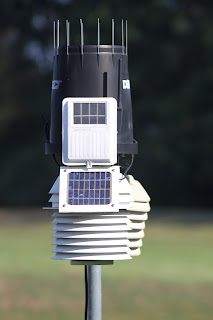Tips on Choosing the Best Weather Station For Kids To Use
Nothing is more exciting to some children than the weather. Seeing the incredible power of nature in action can be thrilling.
One of the primary issues for teachers wanting to communicate the marvels of nature with their children is finding the correct equipment for measuring the outdoor elements.
Many scientific departments are including these elements stations into their curriculum.
What Are Some Factors To Consider When Purchasing
Using all of the climate condition metrics at your disposal is a terrific method to figure out what's going on with the weather in your area.
Take a look at the many components of a climate instrument collection unit. A simple-to-use unit would typically include a number of sensors that provide information on topics like precipitation and wind speed, to mention a few.
A meteorological study's numerous components can educate a youngster a variety of things about the weather and the world around them.
Get A Headstart
It might be beneficial to begin teaching your child about weather station for kids at an earlier age before he or she studies them in middle or high school.
You may help your youngster develop both knowledge and interest.
This will be both entertaining for you and your child, as well as an opportunity to explain science laws.
Make sure you educate the laws of physics and how they relate to the weather conditions we see on a daily basis here on planet Earth.
For your consideration, here are some terrific fun beginner weather stations. Both boys and girls will like these.
This kit should be taken into consideration while looking at all of the student science weather station experiment kits for kids.
It includes top-notch weather science experiments as well as a solid foundation for being an excellent learning tool.
The following are some of the features:
- Discover how the Earth's atmosphere impacts all of us.
- Experiment using a model globe.
- Recreate the Earth's air and ocean currents, as well as its heat stores.
- Investigate the water cycle.
Teach How an Anemometer Can Be Used to Predict Weather Patterns
An anemometer is a device that measures the wind speed in a certain area. Some anemometers have propellers, whereas others feature cups. There isn't much of a difference between these two types of wind measuring instruments in most cases.
A teacher can explain how wind speed and direction can be utilized to forecast outside element patterns when setting up the anemometer.
Meteorologists use anemometers to anticipate when large storm fronts are approaching and how severe they will be.
Seeing the anemometer in operation is always a big hit with kids. Involving the kids in the anemometer's setup and reading can also be a terrific opportunity to incorporate science and arithmetic into the same lesson.
The Control Panel
Another essential component of any excellent outdoor climate station is an indoor display console. A teacher must complete their homework before attempting to teach a class about the numerous readings on the station.
The data from all of the students' tools installed on this display will be easily accessible to the pupils.
Many station manufacturers' climate instrument display consoles are quite bright and elaborate. A lengthy discussion with the kids will be required to point out everything the station offers. To adequately cover it, this could take a number of classes. The acquisition of the correct system might make learning how to utilise a personal weather station much easier.


Comments
Post a Comment